There are over 200 recognised breeds of chicken around the World but not all hens are equal in their laying ability so if you would like chickens for eggs, look at my top 10 laying hens below first. It is commonly accepted that all chickens decended from the Jungle Fowl. Pure breeds of chicken have been developed over many hundreds, even thousands of years from the Jungle Fowl (although science is still challenged by the Auraucana that lays blue eggs).
A Little History of Laying Hens
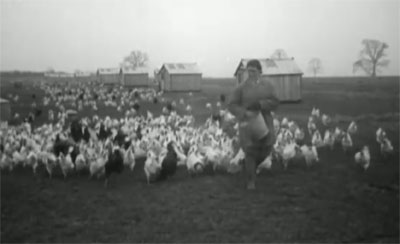 Before the First World War, ducks were the better egg layers and chicken breeds that layed 100 eggs or more per year were considered good layers. Most of the development of pure bred laying hens came after the Second World War when there were many laying trials and tests and it was common for breeders to ‘trap nest’ hens to record their individual output so that they could be used to produce further generations of laying hens.
Before the First World War, ducks were the better egg layers and chicken breeds that layed 100 eggs or more per year were considered good layers. Most of the development of pure bred laying hens came after the Second World War when there were many laying trials and tests and it was common for breeders to ‘trap nest’ hens to record their individual output so that they could be used to produce further generations of laying hens.
Development of the ‘Hybrid’
The developments with pure breeds were soon to be followed by hybrid (a cross of pure breeds) laying hens. There were millions of pounds spent during the 1950’s on creating hybrids that were not only capable of laying more eggs but also had a good feed conversion.
During this development, the parent flocks that created these hybrid layers were becoming a different ‘strain’ of their own because hens were selected for egg production rather than the way they looked.
Interestingly, duck eggs could have been on our breakfast table rather than chickens eggs… but they did not do well kept in confined conditions like chickens.
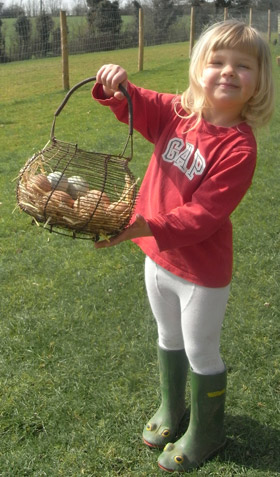 My Top 10 Chickens for Eggs
My Top 10 Chickens for Eggs
The following table lists my top 10 laying hens (a mixture of hybrids and pure breeds) and gives an estimate of the number of eggs they are capable of producing if kept in the right conditions.
Note that there are many different strains of hens from different breeders that will perform differently… egg numbers can vary on a number of other factors too, particularly with feeding and daylight levels.
Exhibition strains that have been closely bred are not usually selected for their egg laying performance. Try to purchase hens from a good ‘Utility Strain’. There are some breeders that advertise utility strains and the number of eggs they expect from their strain every year.
Hybrids are much more reliable at producing a given number of eggs and are bred mainly for this purpose.
1. Goldline (Hybrid)
The ultimate egg machine. This little commercial brown hen will lay up to 320 large brown eggs in her first year. They have a good feed ratio and are very similar to the birds used on farms to produce eggs for the consumer market. A very friendly bird that will be in your house if the door is left open!
2. White Leghorn (Pure Breed)
Small attractive birds with a good feed efficiency that lay up to 300 large white eggs in their first year. These are the standard commercial hen used in the U.S. for egg production (because white eggs are preferred). They can be quite flighty and can fly well so make sure they can be kept securely before you buy them or clip a wing to keep them on the ground.
3. Nera (Hybrid)
Hardy birds that are great foragers and layers of a good quality large brown egg. The Nera is a cross between a certain strains of Rhode Island Red and Barred Plymouth Rock, originating in Scotland. You can expect around 270 eggs in their first year.
4. Amber (Hybrid)
The Amber is a Rhode Island Red based hybrid that looks attractive and has very soft feathering. She is a fantastic layer of up to 300 medium eggs in her first year.
5. Speckledy (Hybrid)
The Speckledy is a flecked dark hen, a cross of a Rhode Island Red and Marans. She lays around 270 large dark brown eggs in her first year.
6. Rhode Island Red (Pure Breed)
The Rhode Island Red is a good layer of up to 220 large brown eggs in their first year. Be sure to get a utility strain though as these are a popular show bird.
7. Marans (Pure Breed)
Good layers of medium to large dark brown eggs. Copper Black Marans seem to be the best layers laying up to 200 eggs in a year. They are often good winter layers, with pullets coming into lay during January.
8. Light Sussex (Pure Breed)
Attractive birds that will reward you with up to 200 medium tinted eggs.
9. Araucana (Pure Breed)
Araucanas are very unique looking. They initially came from Chile in South America. The Araucana lays around 200 medium sized blue to bluish-green
10. Crested Cream Legbar (Pure Breed)
An attractive hen with a small crest that will lay up to 180 medium sized blue to bluish-green eggs that will add a little colour to your egg boxes.

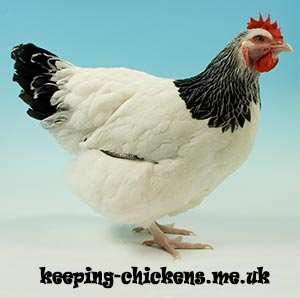

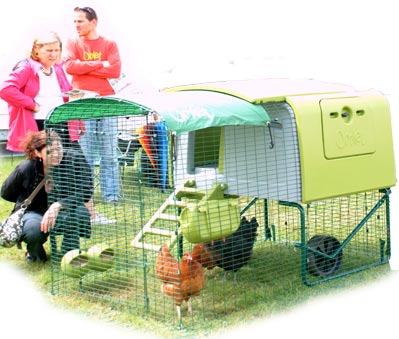
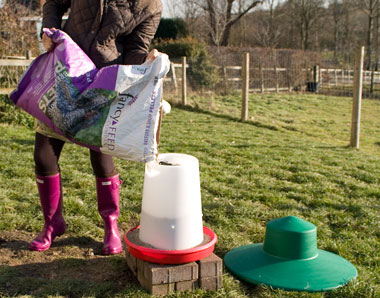

I’ve been reading this website for the past 2 weeks!! I’ve got my coop and run all ready for my 3 girls to arrive on Wednesday.
They are ex battery hens but have been rescued and free range for the last 6 months!!
I’m just a bit unsure as to how long to keep them in their coop when I first bring them home.
I’m getting them on the evening so will be putting them straight into the coop with some food and water. How long shall I leave them in there before I open their little hatch to the run? Will over night be ok or does it need to be longer?
Sorry if it’s a simple question but I’m new to all this.
A day or possibly 2. Personally, I just let new hens out the next day and make sure they are heading in the right direction the first few nights.
Hi we have just bought 3 cuckoo marans and this is our first time at hen keeping what I would like to ask is they are laying soft shell eggs we have had a couple of hard shell eggs, we give them pellets in a feeder and put some oyster grit in a bowl they have corn in the afternoon and greens in the morning. Have you any ideas to get their shells hard? Didn’t know whether they need time to settle in or whether to put the grit and pellets on the grass instead of in feeder/bowl?
Would just like to thank you for the very informative website its been a great help this past week.
Regards Jenny
It could be due to them settling in but with some strains, they lay some soft eggs from time to time. Soft shelled eggs are much more common when birds are young.
Providing they have layers feed and soluble grit (usually oystershell), they should be fine once they get going.
hiya I’m new to this websit I have 2 ex-bat hens and 1 warren which we have had from p.o.l We areonly getting 1 egg per. day any thing I could do to help them start laying again?????
Once ex-batts are fully recovered, they should give you resonable egg numbers. Once they are all fit and healthy, given a little time, they should start laying reasonably well.
hi. am interested in keeping layers. i want to keep about 100 layers on my half an acre piece of land in kenya. all i wanted to know is, is this land enough to support these number? if so, how much, on average can it cost me? what are the returns, i.e., is it profitable?
I don’t really know, I keep small numbers of chickens and haven’t tried keeping this number on a small area. I don’t have costings either I’m afraid. I would try to find another poultry farmer locally to talk to. Good luck 🙂
Hi – This is probably nothing but as we are new to the chicken world I just wanted to check. We have 6 chickens, and one of the Welsummer’s is laying a brown egg that looks scratched? We have had them all about 4 weeks now and the scratched look has only just started this weekend. Im not worried about the look of it but wanted to be sure it didnt mean there was a problem anywhere else. Thanks for reading
Shelly
Yes, this can happen. Brown eggs laid by Welsummers and Marans are coated with pigment whereas blue, green and other colour shells are coloured right through. Sometimes the brown pigment gets rubbed of scratched off, often by hens feet. There’s nothing to worry about.
Thank you – I had a hunch it was all fine but thought I would double check as I have become very attached to my little ladies very quickly! I wasnt expecting to like them quite so much! lol Dust bath is my next issue – am thinking about creating a shelter/dust bath as the run is 11m by 5m with shade from a big treee nearby but no actual trunk, bushes or lowish shelter and the ground which is grass is never completely dry. I have a split group of 3 x 1 yr old dominant hens and 3 about 3 mths old and I have a hunch they dont all get to go into the coop when the weather isnt great so I want to create another area for them which I could then make into a dust bath too. Does this sound ok to you? Do you have any suggestions re what I should add for the dust bit? Sorry to post this in the egg section – hope its ok to carry on my questions here.
Shelly
Sounds good.